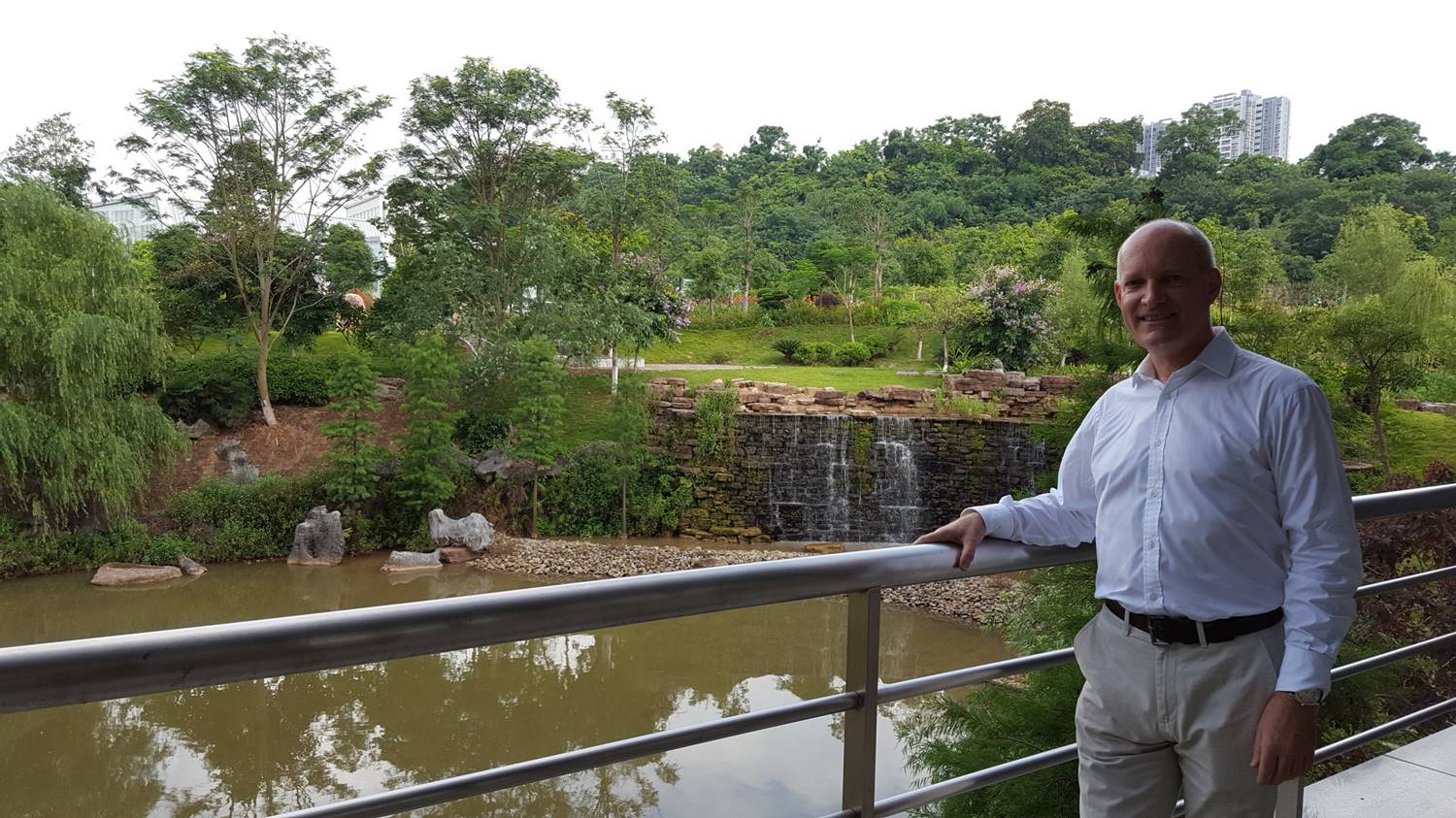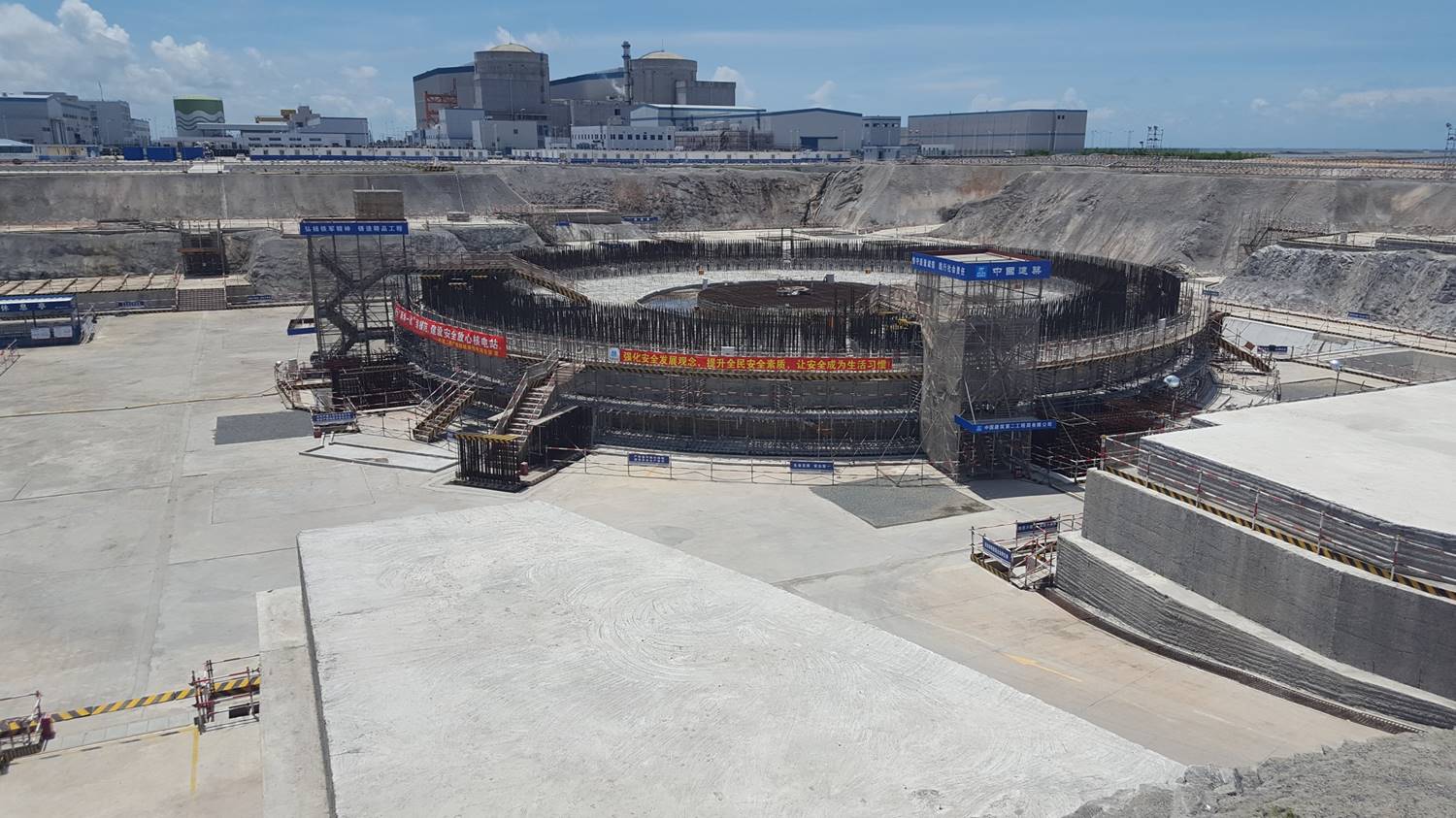The second week of my recent China trip was spent in the hot, green and rapidly developing southern province of Guangxi.
*
My trips to China are usually to the Tier 1 cities: Beijing, Shanghai, Shenzhen and more rarely to Guangzhou. In these places you see the full achievement of the country’s remarkable economic development. They aren’t exactly finished – great cities never stop, as you can see from the forest of cranes in London, where the area around Gresham Street in the City has been ruthless ripped down and replaced in the ten years since I stopped working there. But you don’t get the sense in Beijing and Shanghai of the continuing development of the country. For that you need to visit somewhere that is still seeing massive investment in infrastructure and real estate, where the growth and capital spending are visible before your ideas. This is the case in the province of Guangxi.
Guang (广) means vast, expanse or broad. The southern region of China, so distant from Beijing, consists of Guangxi (“west expanse” and Guangdong (“east expanse”). The latter is the powerhouse of the Chinese economy, as it has been for centuries, reflecting the geography that makes it ideal for international trade – rivers, excellent harbours (including the neighboring Hong Kong). Guangxi was the poorer cousin, partly owing to more mountainous terrain and a lack of coastline. After the Communist revolution, a land swap between the two provinces gave Guangxi a section of coastline. It is also favourably positioned for increased trade with Vietnam, which is a smaller but equally dynamic economic powerhouse. The central government is targetting development in the less rich and more distant provinces and Guangxi, with its 50 million inhabitants, is a beneficiary.
Officially Guangxi is the Guangxi Zhuang Autonomous Region. The Zhuang people are one of China’s 56 non-Han ethnic minorities, which make up in total about 9% of the population. The 18 million Zhuang are the largest ethnic group, mostly living in Guangxi. One of the challenges for me in learning Chinese is that many Chinese words, when translated into unaccented English, have multiple possible meanings. So I learned that Zhuang (the ethnic group’s name) is different from Zhuang (the family name of a former MFin student, and the name of a famous philosopher. Similarly, in Shanghai I met Phoenix TV interviewer and Cambridge alumna, Xiaotian Fu, who recently made a donation to Churchill College. There are at least three different plausible translations of Xiaotian. The correct one in this case is 晓田 (dawn field). I thought it might be 小天 (small sky or heaven), which I was (kindly) told was a good guess.
GIPA
My visit was hosted by the Guangxi Institute of Public Administration (GIPA) which trains senior provincial government officials at its campus in Nanning. I became a little less confused about the relationship between the Chinese Communist Party (CCP) and the government on this trip, but I still don’t fully understand it, as we have nothing comparable in the west. GIPA is the Party School (though it’s more like a university). Officials who study there may, or may not, be Party members. It is neither necessary nor sufficient to be a Party member to work in government but the more senior officials are more likely to be, as it makes promotion easier. This is partly because admission to the Party is based on merit and achievement, though it must also be related to what we might call networking opportunities.
GIPA’s campus is possibly the most beautiful I’ve ever seen, easily as attractive as that of Xiamen University and even (I say this slightly grudgingly) Harvard Business School. Like Nanning itself, it’s very green, positioned on a gentle slope with trees and a fine lake. The buildings are modern, spacious and comfortable. One can easily imagine that this encourages study and commitment from the delegates.
I gave a talk on the opportunities for cooperation in the energy sector between China and the UK. The delegates were impressive: keen, earnest, seeking to learn from the west where possible, motivated to develop and improve their province. Inevitably I was asked about the effect of the UK’s narrow vote to leave the EU, which is clearly puzzling our friends round the world. I was less prepared for a question about the England football team’s defeat the night before by Iceland, a country whose population is less than 5% that of London. I took this as evidence that these serious technocrats had a sense of humour.
Another Chinese nuclear power station
The other reason for visiting Guangxi was to see the relatively new nuclear power station complex at Fangchenggang on the coast, near Vietnam. Two nuclear reactors are now operating but more interesting for me is that this is where one of two new Hualong One reactors are under construction (the other is in Fujian province). Hualong (which means Chinese dragon – you sort of get used to dragon themes in this country) is the new third generation Chinese reactor design which the company China General Nuclear (CGN) hopes to build in the UK, at Bradwell in Essex, if it gets generic design approval from the regulator. Hualong is the fruit of steady learning and improvement by Chinese companies of the French and Japanese/American designs it has licensed. It could be the solution to the great nuclear challenge: a reliable low carbon energy source that is not wildly expensive. It’s too soon to say until Hualong is built and operating. But the team at Fangchenggang expect construction to take less than 70 months. By comparison, nobody really expects the proposed European Pressurised Reactor at Hinkley Point in the UK to take less than 100 months. Since nuclear stations are highly capital intensive, time is very much money.
Trains, automobiles and a boat
I was lucky enough to be taken by most hosts to see some of Guangxi’s famously beautiful scenery, arising from the remarkable limestone karsts divided by the Li river that flows from Guilin, the former capital city of southern China, to Yangshuo, a major tourist attraction. This meant taking a high speed train from the new station. Like many Chinese cities, Nanning has a huge, new railway station built just for the high speed train network. I would estimate that the one in Nanning is bigger than the entire terminal building at Stansted airport. It’s a symbol of what infrastructure investment can mean when done well.
Another reason for me to visit the province is that it is a major hub of China’s One Belt, One Road strategy, a plan to build and upgrade transport links across Eurasia, over land (a new “silk road” which makes up the belt part) and by sea, via east Africa and the Middle East (confusing this is the road part). Involving over 60 countries, the plan is highly ambitious, envisaging improvements in trade connectivity across the largest land mass on earth. Part of the plan involves strengthening China’s trade links to South East Asia, including Vietnam, which is where Guangxi fits in.
The Belt and Road strategy is a mixture of economics and diplomacy. It will boost China’s trade, help soak up some of the surplus industrial capacity and presumably increase China’s influence across central and southern Asia. Part of the funding will come from the new Asian Infrastructure Investment Bank, which by a nice coincidence was directly outside my hotel room in Beijing. The UK was the first western nation to join the bank, since joined by most others, excluding the US (which is sulking at its failure to undermine it) and Japan (always keen not to offend the US).
Conclusion
All of my trips to China have been blessed by great hospitality and warmth but this one was exceptional. Many thanks to my colleague Ding Lan for introducing me to GIPA; to the President and Vice President for their invitation; to Professor Shen for his generosity and kindness, including introducing me to Guilin’s beerfish and 桂花酒 and teaching me to say 再来一瓶啤酒 (another bottle of beer) in Yangshuo dialect; and especially to Kelly for outstanding translation, help and companionship.







Stephen Heath
As a resident of Guangxi, I was struck by how low was your estimate of population. Wikipedia suggests around 47m, so I suspect that you intended 50m not 15m.
I have also been to Fangchenggang Nuclear Power Station and saw the foundations for the first Hualong 1 reactor, which will be unit 3 on this site. However, I could not get inside the stage 1 part of the site to see reactors 1 and 2. Did you manage to get in to see them?
Simon Taylor
Thank you, you are quite right, it was a typo, which I’ve now corrected. I saw reactors 1 and 2 only from a distance. It’s not normally possible to visit a working reactor, even in the UK, let alone if you’re a foreigner. But there isn’t much to see in practice, since all the interesting bits are enclosed.
Chloe Mitchell
Hi Simon, I love your blog. I’ve recently moved to Beijing from the UK. My background is in finance (I was a trader, interest rate derivatives). I’d really really love to read an explanation of the onshore and offshore currency and interest rate markets in China, how this links with the free trade zones and the stock connects, and what the next steps towards RMB internationalisation are. I don’t really understand about the swap lines China has with various other countries and who exactly has access to which markets in Shanghai, honk kong, the mainland and the rest of the world. That’s quite a list, sorry! If you could shed any light on any of this, or perhaps recommend a website or booklet that explains all this well, I’d really appreciate it.
Thanks so much,
Chloe